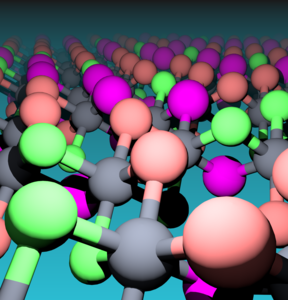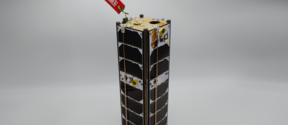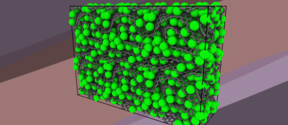A road to frustration
quantum magnets.

Magnetic materials are one of the ultimate keystones of modern technology, with the paradigmatic example of magnetic memories in electronic devices. On top of their long-standing impact in technology, an elusive type of magnets known as frustrated magnets have the potential of providing a platform for fractional matter, one of the possible building blocks for future quantum computers. However, designing such states requires extremely fine control of the microscopic properties of magnetic material, representing a critical open problem in material science.
An interdisciplinary team of researchers from Boston College (US), University of Texas at Dallas (US), and Aalto University has demonstrated a new technique to control the microscopic properties of layered magnets. The work combined two experimental teams led by Julia Chan and Fazel Tafti that included Thomas Tartaglia, Joseph Tang, Faranak Bahrami, Mykola Abramchuk, Gregory McCandless, Meaghan Doyle, Kenneth Burch, Ying Ran, together with the theoretical support of Jose Lado, assistant Professor in the Department of Applied Physics at Aalto.
The properties of magnetic materials are typically controlled by selectively replacing the magnetic atoms, a technique widely used in many compounds. However, these techniques are far from providing the ultimate control necessary to drive specific magnets into the delicate quantum frustrated regime. In compounds containing magnetic and non-magnetic elements, magnetic interactions are often mediated by the non-magnetic element, a phenomenon called super-exchange interaction. When the spin-orbit effect, a relativistic effect that appears in heavy elements, is finely tuned, the super-exchange interaction can potentially lead to frustrated states, ultimately generating fractionalized quantum matter. The team demonstrated a novel way of controlling the microscopic properties of van der Waals magnets by exploiting the spin-orbit coupling of the non-magnetic element.
In a ground-breaking work published this week in Science Advances, the team created a novel class of magnetic van der Waals materials, in which they selectively controlled the content of the non-magnetic atoms. The experimental team demonstrated how to create alloys with different average “heaviness” of the non-magnetic elements of the layered magnet. Theoretical predictions demonstrated that the continuous tunability of the spin-orbit effects in those alloys drives the magnetic state of the compound between two limits featuring different magnetic symmetry breaking, as was experimentally observed. Remarkably, at the turning point between those two limits, strong signatures of a frustrated state were found in the experiments, as theoretically expected from the existence of competing interactions.
These findings put forward a ground-breaking technique to control magnetism in layered materials through chemical spin-orbit engineering. This work opens up dramatic new possibilities to create van der Waals magnets with elusive controllable interactions, that can ultimately provide a novel pathway to design exotic frustrated van der Waals quantum magnets.

Read more news

Finland’s Foresail-1p science satellite successfully launched into space
The Finnish science satellite Foresail-1p was successfully launched into space after 8 PM Finnish time on Friday 28 November 2025, aboard the Transporter-15 mission from Vandenberg Space Force Base, California.
A paradigm shift: machine learning is transforming research at the atomic scale
Assistant professor Miguel Caro and his research group use and develop machine learning tools to accelerate discoveries from simulation to experiment
Aalto academics begin Unite! visiting professorships at TU Darmstadt
As part of the Unite! Visiting Professorship Programme, TU Darmstadt welcomed six visiting professors from Aalto University for the winter semester 2025/2026.






